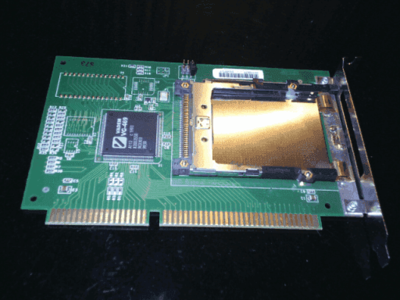As I've been considering getting one of these systems I already know a bit more about them (still, next to no information in English available).
Here's a Google Translated version of a fairly complete database of PC-98 systems and compatibles: With98 PC9800 Series information
There's a version of FreeBSD that can run on the platform: https://www.freebsd.org/platforms/pc98.html
Jo22 wrote:
PC98: Japanese PC platform (only partially compatible to IBM PC). Originally had C-BUS, later PCI. PC98 uses different memory layout.
Basically, PC98 uses Intel(-compatible) processors like the 286, 386, 486, and various 586/Pentium processors, but the architecture is sufficiently different (memory, video subsystem, floppy & hard disk drives, etc.) that it needs specific operating system versions. The system architecture uses a lot of daughterboards on the motherboard for various functions. Something important about C-bus (the NEC proprietary bus, plugs into the motherboard using a riser card) is that it was only used on PC-9801 systems and earlier, not on PC-9821 systems, as far as I've been able to figure out. The PC-9821 uses a proprietary bus similar to C-bus that might be electrically compatible with ISA and later PCI (the riser cards plug into ISA/PCI slots). Later PC-9821 had both the proprietary buses and regular ISA and/or PCI slots. This does not apply to Epson clones, those all use C-bus.
Later models are said to include a V20/30 co-processor for backwards compatibility.
Only specific models, I think. However, it is possible to get system cards that add support for different platforms, but those cards are rare as hens teeth. I've seen PC-88, PC-9801, PC-FX, & IBM-AT. There are also overdrive boards available that can be used to upgrade a 386- or 486-based system into a 486 or 586 system.
Various models use special sound cards for backwards compatibility, but apparently NEC screwed up and on some models it doesn't actually work as intended. Speaking of soundcards, some PC98 machines are really impressive, with FM Synth and Roland MIDI boards included by default, even on laptop models (!).
Platform was popular for Touhou games.
PC-9821 only, AFAIK.
Jap. MS-DOS: runs on PC98, has compatibility issues with western software (perhaps a few text-mode programs will work).
Jap. Windows: runs on PC98. Last version was Win98SE (and Win2000). Can also run normal Windows programs from the IBM PC platform.
From Windows 95 onward only, because from that point the access to hardware was handled by Windows instead of the programs. So it's not possible to run a Western DOS-based game that needs to access hardware directly on a PC98 system. Likewise, games and programs for the PC98 that directly access the hardware were designed with the specific hardware limitations of the PC98 system in mind, so they won't run on AT-compatibles because they look for resources that are not there.
DOS/V: Japanese DOS which runs on western IBM/AT class machines (+386, maybe also 286, uses EMM386). Last version by MS was 6.20 […]
Show full quote
DOS/V: Japanese DOS which runs on western IBM/AT class machines (+386, maybe also 286, uses EMM386). Last version by MS was 6.20.
Uses VGA graphics mode to provide Kanji/Katakana characters. Hence the "/V" naming scheme. Also has a western mode (Romanji).
Partially compatible with jap. MS-DOS on PC98, some games have built-in support for both platforms.
A TSR for English DOS, DOSJP, is available to provide limited compatibility with jap. character set.
Apparently, there also was a Korean version of DOS/V. The name "DOS/V" (ドスブイ) is also used as a generic term for any (western) PC.
Win/V: "Win/V" refers to an extension for English Windows (Win 3.1). It was published by Fast River Systems.
Jap. versions for PC98 and DOS/V were sold separately (included different drivers).
AFAIK, DOS/V was sold in a version for Western X86 systems and a version for PC98. The same applies to Windows 3.1, 95, 98, 2000.
Again, that's just a tiny explanation for beginners. Someone could literally write several pages about this matter. 😅
If you find any mistake, you can keep it. Just kidding! I'll be glad if someone has something to add, whatever it is. 😉
Some more stuff: Being a Japanese system, they run on 100V A/C. The video output is specific and requires a special type of monitor, although there are VGA-convertors available. The keyboard connector is also specific, as is the keyboard. Several of the standard ports on the motherboards look like PC-compatible ports, but are not. Early floppy disk drives use specific hardware with controllers on the floppy board itself and sometimes special floppy formats (esp. 5.25" drives). Hard disks were not standard until quite late (mid-1990s) on low-end machines and used SASI, SCSI, or IDE interfaces. An alternative for a hard disk are persistent RAM drives (with a battery on-board) that plug into NEC's proprietary extension ports.
I've also noticed that quite a few resellers sell stripped down second hand systems where all interesting stuff (sound cards, SCSI cards, hard disks, sometimes even floppy disk drives) was removed, with the expansion cards separately listed for obscene prices.
